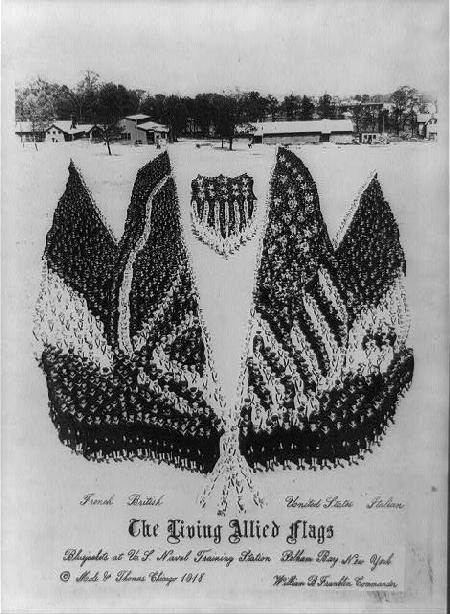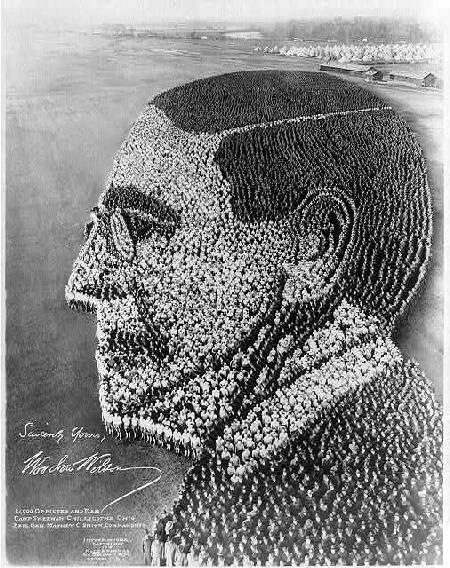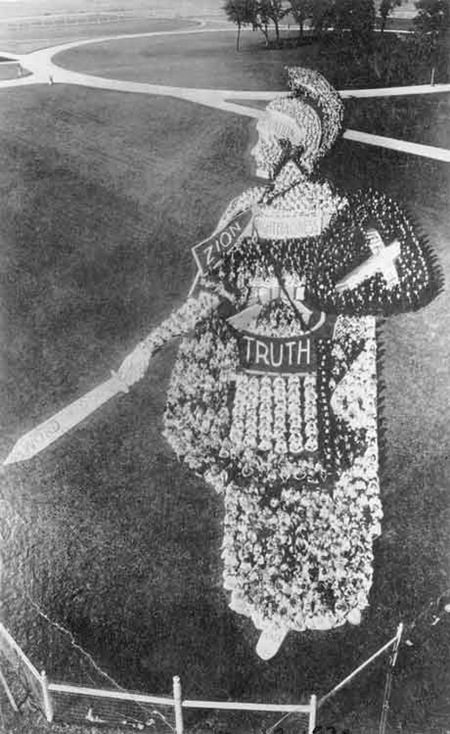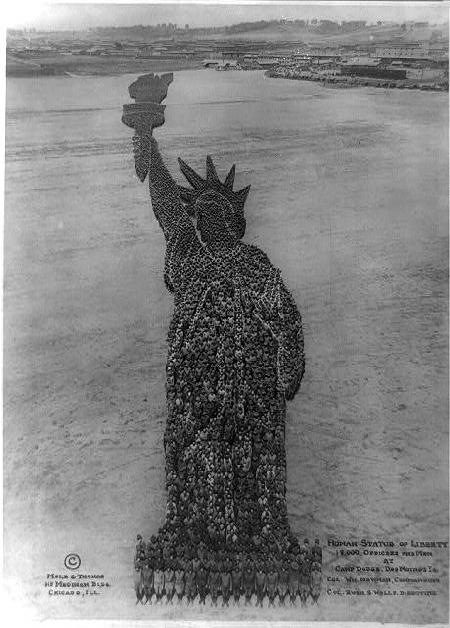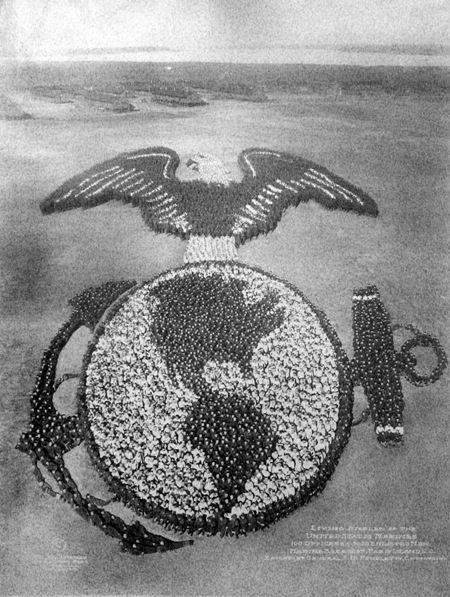When practical photography was born in 1839, the simple act of capturing basic portraits and images of everyday objects was a feat of epic and almost unfathomable proportions. That being said, it didn’t take very long for burgeoning photographers to start experimenting with form and function.
About 80 years after the craft’s inception, Arthur Mole and John Thomas decided to develop a series that was unlike anything that had ever been done before. By organizing groups of American soldiers into iconic images that pay homage to some of our nation’s most influential figures, the two achieved an effect that’s beyond impressive (even by today’s standards).
Thomas was in charge of organizing the troops into recognizable images, and Mole was tasked with climbing an 80-foot viewing tower and capturing the photos.
The Human U.S. Shield (1918) — 30,000 officers and men
.
The Living Allied Flags (1918)
Mole fittingly referred to the pictures in this series as “living photographs.”
Living Portrait of Woodrow Wilson (1918) — 21,000 officers and men
Living Portrait of Woodrow Wilson (detail)
These photos boosted morale as U.S. troops continued serving in World War I.
The Zion Shield (1920)
Human Statue of Liberty (1918) — 18,000 officers
Most impressively of all, every picture was captured with a simple 11 x 14-inch camera.
Living Emblem of the United States Marines (1919)
(via Amusing Planet)
To see more pictures from this collection, check out the rest over on the Library of Congress website.

